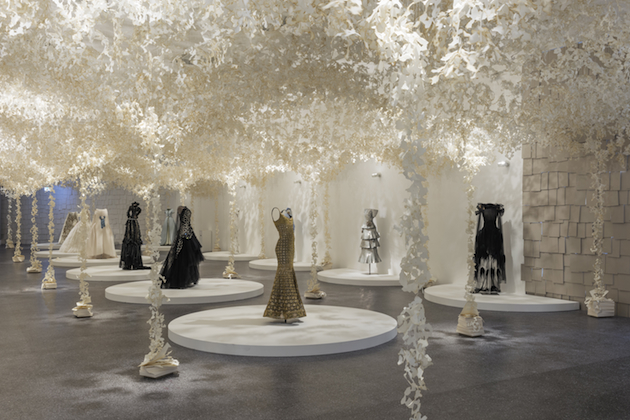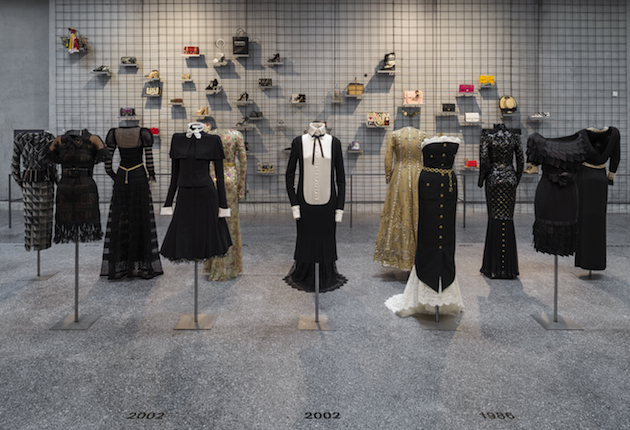
One of the most appreciated features of fashion is that it has to do with the idea of spectacle. Each of the ways in which fashion can be shown is to be considered a sort of spectacle, be it a photograph, a catwalk, a performance. Since Diana Vreeland first brought her idea of fashion – which is ours as well – into the museum institution, even the fashion exhibition has been considered a spectacle. There are, indeed, some cases in which objects, rather than being just wonderful objects to be visually appreciated – are put together and displayed to reflect about a path, a practise, a method. This is the case of the exhibition the Bundeskunsthalle has dedicated to Karl Lagerfeld, called ‘Karl Lagerfeld. Modemethode’. The exhibition traces a circle, ‘from paper to paper’, as stated by Rein Wolfs, co-curator together with Lady Amanda Harlech, friend and consultant of Lagerfeld himself; it holds everything that is in-between the blank paper at the beginning and the blank paper at the end of each project Herr Karl embarks on.
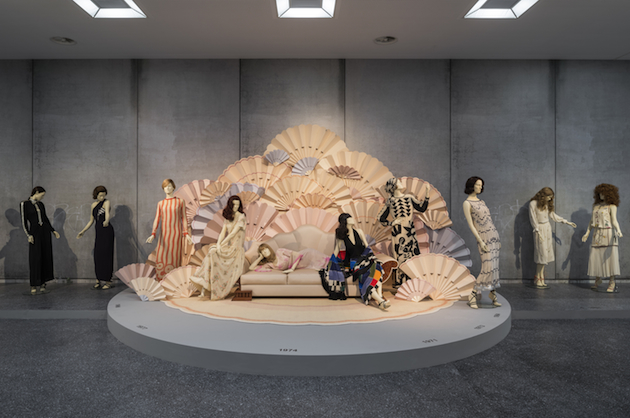
The method is shown for what it is, and the process seems quite regular: from the sketch to the garment, and from there to the communication of the design to the public with ADV campaigns and photographs, all curated and made by Lagerfeld himself. The whole architecture of the exhibition is strongly fictitious, and seems to recreate in each if its parts a sort of scene that comes out precisely from Lagerfeld busy mind. It opens with the re-creation of one of his desks, with all the objects it has around: crayons, many sheets of paper, piles of books. The desk is true-to life and indeed so fictional it is a manifesto of the theatrical idea of building up a story, a character: something Lagerfeld has worked on his whole life, creating a mythology around his persona and adapting his way of life to the ‘idea’ he wanted to become. Lagerfeld is himself a fictitious character, halfway between an ancient regime man and a black & white ideal silhouette, with a well-recognisable image that has made him an incontrovertible contemporary icon. He has decided who to be and how to be, and has followed a method in order to reach this symbiosis, which is the same method he seems to apply to design.
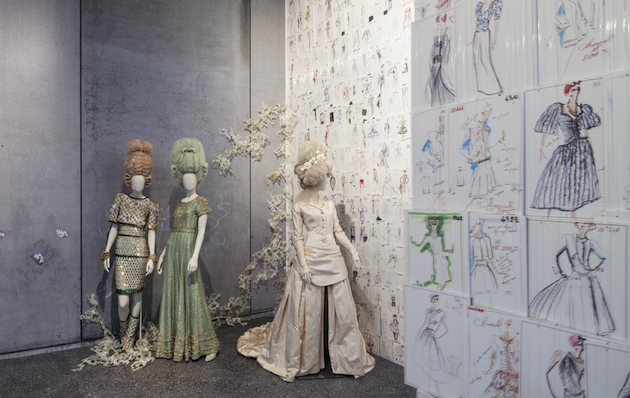
Lagerfeld is not shy in showing not only what he does, but above all how he is – or rather how he has decided to be. Everything is on set – from the sketches to the ADV campaigns and photographs, from the accessories to the garments, coming from the principal collections he has been in charge of: Chloé, Fendi, his eponymous label Karl Lagerfeld and the label he is mostly identified with, Chanel, ça va sans dire; everything seems simple, immediate and fresh, and denotes the impelling need to renovate, to change; emblematic, in this sense, is the selection called ‘the evolution of tweed’, a small path inside the experimentation with a fabric with a personality – and a story – so strong.
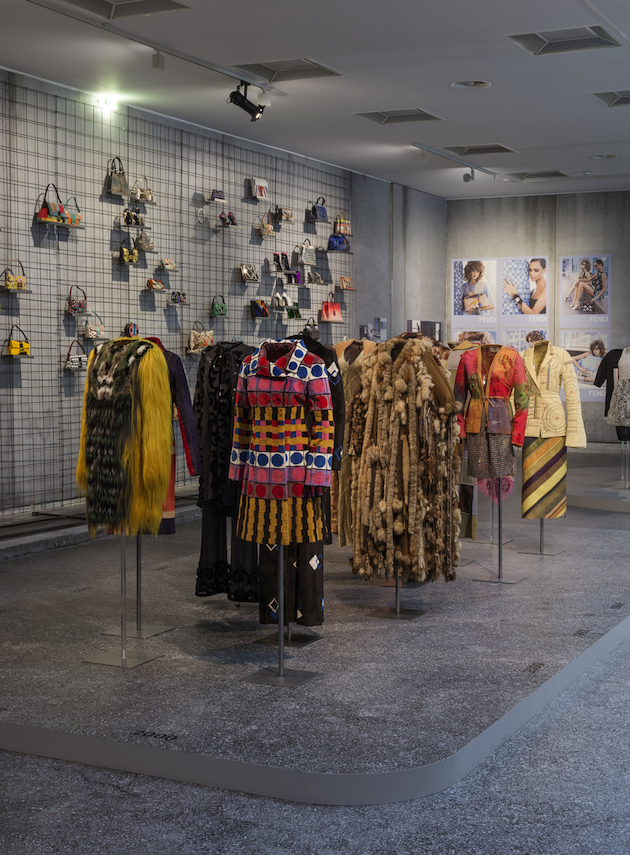
A sort of sprezzatura, a conscious and elegant nonchalance, characterises all of his designs – from the strikingly simple yellow coat with which he won the Woolmark Prize in 1954 to the Fun Furs he has been creating for Fendi for about 40 years – and sets the atmosphere of the whole exhibition. It is not a retrospective in the very sense of the world. It does not look back, but it rather depicts a way of working that has evolved in the years, shaping not only objects, but also a way of being which is timeless. The way Lagerfeld has merged his personality with his practice is the real core of the exhibition, and the actual message it wants to put through. The process is clear and linear, and has to do with the consideration of fashion as a spectacle, in a unity of practice and being, in which effort is dissimulated and the method becomes the man, the man the method.
